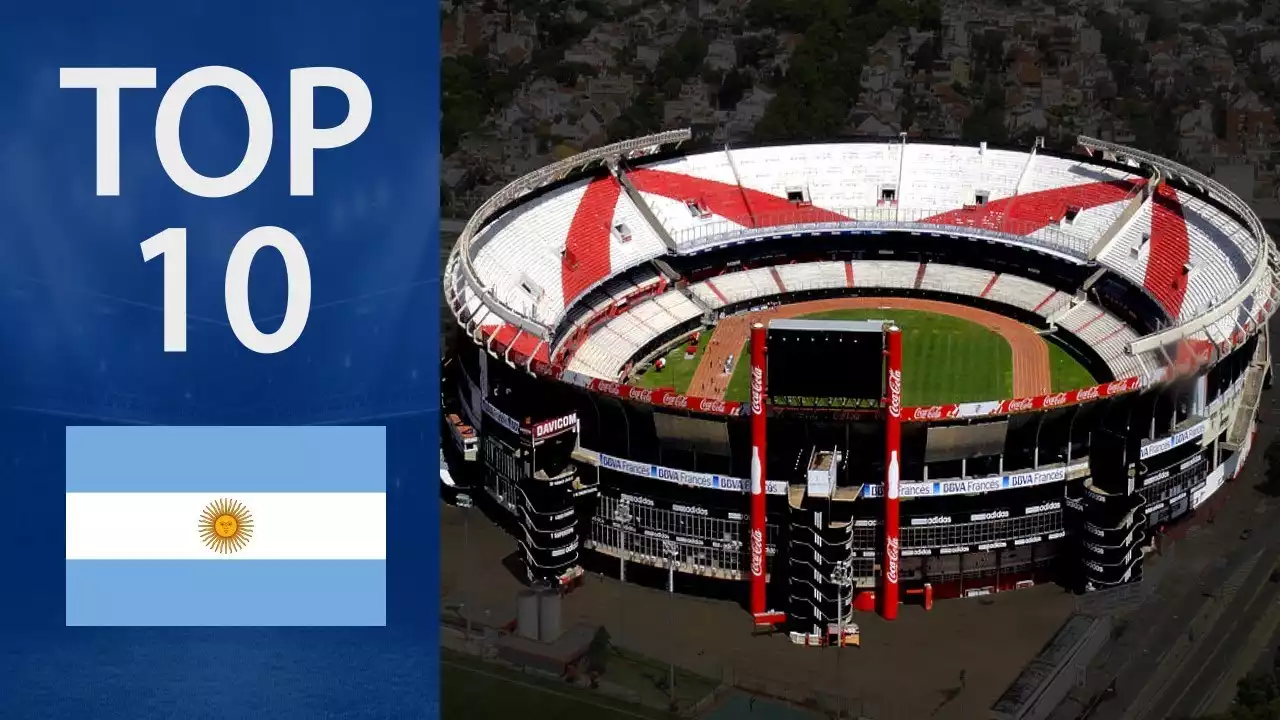Importance of stadiums in football
Stadiums play a crucial role in the world of football. They serve as the battlegrounds where rivalries are born and legends are made. These colossal structures have the power to bring thousands of fans together, united in their love for the game. The atmosphere within a stadium can elevate a match from ordinary to extraordinary, as the crowd's energy and passion fuel the players on the field. The largest stadiums hold the potential to create an awe-inspiring spectacle, with their sheer size and capacity allowing for a greater number of fans to witness the action live. Let's now explore the ranking criteria used to determine the largest stadiums in the Argentine Primera Division.
Ranking criteria for the largest stadiums
To determine the largest stadiums in the Argentine Primera Division, various factors are taken into consideration. The primary criterion is the seating capacity of each stadium, which reflects the number of fans that can be accommodated. Additionally, the historical significance and cultural impact of the stadiums are considered, as these aspects contribute to the overall grandeur and reputation of the venues. Without further ado, let's dive into the top 5 largest stadiums in the Argentine Primera Division.
Estadio Monumental Antonio Vespucio Liberti - Club Atlético River Plate
Topping our list is the Estadio Monumental Antonio Vespucio Liberti, home to Club Atlético River Plate. Located in Buenos Aires, this colossal stadium has a seating capacity of over 70,000, making it the largest stadium in Argentina. The Estadio Monumental has witnessed numerous historic moments, including unforgettable matches and epic victories. It is renowned for its electrifying atmosphere, with passionate River Plate fans creating an intimidating environment for visiting teams. The stadium's iconic architecture and panoramic views contribute to its allure, providing spectators with a truly immersive experience.
La Historia del Monumental Antonio Vespucio Liberti HD 2018 | Con Jorge Livan
Alberto J. Armando Stadium - Club Atlético Boca Juniors
Next on our list is the Alberto J. Armando Stadium, commonly known as La Bombonera, home to Club Atlético Boca Juniors. Located in Buenos Aires, this legendary stadium has a seating capacity of approximately 49,000. La Bombonera is famous for its unique shape, with one of its stands towering over the field, creating an awe-inspiring sight. The stadium's steep stands and close proximity to the pitch amplify the intensity of the matches, enabling fans to feel fully immersed in the action. The vibrant atmosphere created by the passionate Boca Juniors supporters is truly one-of-a-kind, making La Bombonera a must-visit for any football enthusiast.
LA BOMBONERA - ESTADIO ALBERTO J. ARMANDO - BOCA JUNIORS STADIUM - 54.000 SPECTATORS !!
Libertadores de America Stadium - Club Atlético Independiente
Coming in at number three is the Libertadores de America Stadium, home to Club Atlético Independiente. Located in Avellaneda, Buenos Aires, this historic stadium has a seating capacity of around 48,000. The Libertadores de America Stadium holds a special place in Argentine football history, as it was the first stadium in South America to be exclusively built for football matches. It has witnessed numerous triumphs for Independiente, including their remarkable run of seven consecutive Copa Libertadores titles. The stadium's classic design and rich heritage make it a true gem in the Argentine Primera Division.
President Juan Domingo Perón Stadium - Club Atlético Racing Club
At number four, we have the President Juan Domingo Perón Stadium, home to Club Atlético Racing Club. Located in Avellaneda, Buenos Aires, this iconic stadium has a seating capacity of approximately 51,000. The President Juan Domingo Perón Stadium is known for its impressive architecture and vibrant atmosphere. Racing Club's passionate supporters fill the stands, creating an electric ambiance that fuels the team on the field. The stadium has been witness to many historic moments, including Racing Club's memorable triumphs in domestic and international competitions.
Gigante de Arroyito Stadium - Club Atlético Rosario Central
Rounding out our list is the Gigante de Arroyito Stadium, home to Club Atlético Rosario Central. Located in Rosario, Santa Fe, this impressive stadium has a seating capacity of over 41,000. The Gigante de Arroyito Stadium is known for its imposing presence and passionate fans. The atmosphere created by Rosario Central's dedicated supporters is truly remarkable, as they fill the stadium with their chants and cheers. The stadium's rich history and the club's storied past make it a significant venue within the Argentine Primera Division.
Other notable stadiums in the Argentine Primera Division
While the top 5 largest stadiums take the spotlight, there are several other notable stadiums within the Argentine Primera Division. These stadiums, though smaller in size, hold their own charm and significance. Whether it's the iconic El Cilindro Stadium of Racing Club or the historic Estadio Tomás Adolfo Ducó of Club Atlético Huracán, each venue contributes to the vibrant football culture in Argentina. These stadiums may not have the largest capacities, but they are no less important in the hearts of their respective club's fans.






.png?size=50)



